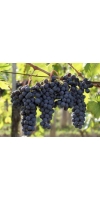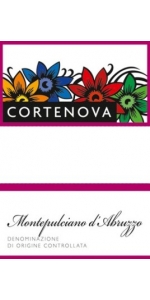Montepulciano

A black skinned grape that is planted through the central and southern parts of Italy, Montepulciano is rarely found in northern Italy because it tends to ripen late. The grape will be quite green if harvested to early. When the is ripe, Montepulciano can produce wonderful wines with moderate acidity that are deep in color. Montepulciano is appreciated around the globe for its strong color, gentle tannins, and soft flavors. Montepulciano wines are most often enjoyed when they are young with a good meal. The Montepulciano grape ripens late and has a tendency to produce an abundance of yields. Montepulciano are on the plump side with a low skin to juice ratio. The skin has pigmented tannins and color producing phenols that produce pink cerasuolo wines or deep ruby colored reds when macerated. Montepulciano has a moderately low acid content and is softer than bitter edged tannins. Wine experts describe Montepulciano as producing plumy and weighty red round wines with ripe tannins, good acidity, and low price tags. Smooth drinkable wines will improve three to four years after vintage. Small quantities of Montepulciano are grown in Australia, the United States, and New Zealand. Some of the wines that have been produced are showing real promise, but are still recognized as being in the experimental stage of wine production.
Cortenova Montepulciano d' Abruzzo is made from 100% Montepulciano d'Abruzzo
Deep ruby red color with violet highlights and a pleasant and fruity bouquet. Full bodied, soft tannins and good acidity.
Excellent with pasta dishes and red meats.
Cortenova Montepulciano d' Abruzzo is made from 100% Montepulciano d'Abruzzo
Deep ruby red color with violet highlights and a pleasant and fruity bouquet. Full bodied, soft tannins and good acidity.
Excellent with pasta dishes and red meats.
- back
Selected Options
Grape Types
Categories
Pricing
Countries
Regions
Grape Types
Wineries
Organic/Free Shipping
All older vintage wines have been purchased from a single collectors cellar. Pictures can be requested before shipment.
Grand Veneur Cotes Du Rhone Les Champauvins Blanc is made 100% Viognier. Located in the area known as "Les Champauvins", close to Domaine Grand Veneur. The soils are clay-sand and limestone. They enable the white grape varieties to ripen slowly, thus preserving their excellent aromatic finesse.
A great Viognier, conceived and produced with finesse and freshness in mind. Bright, limpid pale yellow color. Intense, delicate nose of floral and white-fleshed fruit aromas. Fresh, mineral and airy on the palate. White peach and pear aromas are the most expressive. The fruity characters are long-lasting, evolving into notes of apricot after a few hours' aeration.





